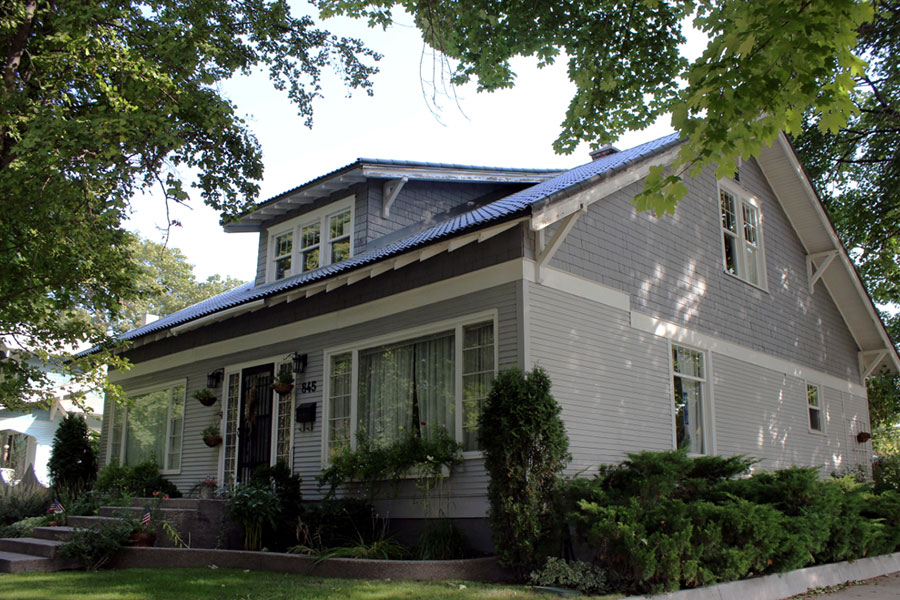When it comes to small towns – such as Kalispell in the early 1900s – the saying “the smaller the town, the bigger the personalities” seems quite fitting.
And speaking of personalities, homes often reflect the personalities of their owners (or at least their temperaments and circumstances). But over time, such reflections may seem blurry, and it takes a bit of page turnin’ through the history to see the past more clearly. The Long/Chester House at 845 First Ave. E. is a good example of such a phenomenon.
In 1913, the Kalispell Bee newspaper declared the home a fine example of “artisticness” – quite a fitting description for indeed, things artistic were vogue – and defined the essence of the “Arts & Crafts” (aka “Craftsman”) architectural movement. So it should be of little surprise that the house was originally painted with maize-colored siding, a green roof, and white trim – a natural color scheme epitomizing the Arts & Crafts style.
Beyond appearances, the house reflected the prominence and personality of its first owners, Thomas and Vesta Long (née Hobbs). Thomas was well-known Kalispell attorney, who could easily stroll to the nearby Flathead County courthouse (much like their neighbor at 835 First Ave. E., lawyer, judge and former Montana state Rep. Joseph E. Rockwood).
Aside from convenient proximity (a reflection of Thomas’ competent efficiency), the home also reflected Vera’s fine taste and discerning personality, which was as beloved as it was ambitious. Vesta was a president of the Montana Federation of Women’s Clubs and a leader in many civic, religious and social organizations. She was also the first woman from Flathead County to be elected to the Montana State legislature.
As typical of the Craftsman style, the home has a broad exterior – much like the expanse of Thomas and Vera in their social endeavors and ambitions. The house also originally had a wide front porch with welcoming French doors – which was rather befitting as Vesta often hosted “teas” and frequently entertained the “who’s who” of the era. The interior décor and appointments also reflect Vesta’s personality. As for example, the built-in cabinets, which put curiosities on display as much as they kept things in their proper place.
In 1919, Vesta divorced Thomas Long and married former Montana state senator William Brennan. Much like Vesta (and the house), Brennan was also a bold character and was a friend to presidents William McKinley and Theodore Roosevelt (which should be noted as yet another connection between Roosevelt and the Flathead Valley.
In 1922, Thomas and Effie Chester bought the home and occupied it until about 1939 (when Thomas unfortunately passed away). Like many others of his day, he came to Kalispell to work for the Great Northern Railway. He then worked for the Missoula Mercantile Co., before establishing the eponymous “Chester’s Book Store” – a Kalispell institution in its own right – which he operated for more than 30 years.
In 1941, Roy and Norma Waller rented the home. Notably, Norma was the daughter of renowned Montana author Frank Bird Linderman. And much like Linderman, who wandered the wilderness of Northwest Montana, the house soon “wandered” a bit from its original form and function.
After WWII, the house was split into a duplex and later transformed into a chiropractic office and a youth hostel. Fortunately, the transformations came “full circle” and the house has been respectfully restored to a single-family home. Despite the alterations, much of the original form remains intact.
Although history may seem blurry, sometimes people, personalities, and popular style all converge at a particular place. The Long/Chester House proves it.
Jaix Chaix is a columnist and author of Flathead Valley Landmarks and other local history books that are available for sale at the Flathead Beacon at 17 Main St. in Kalispell.
